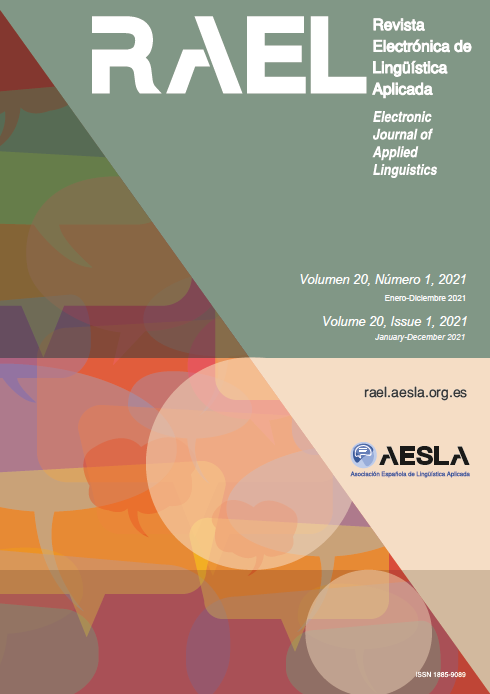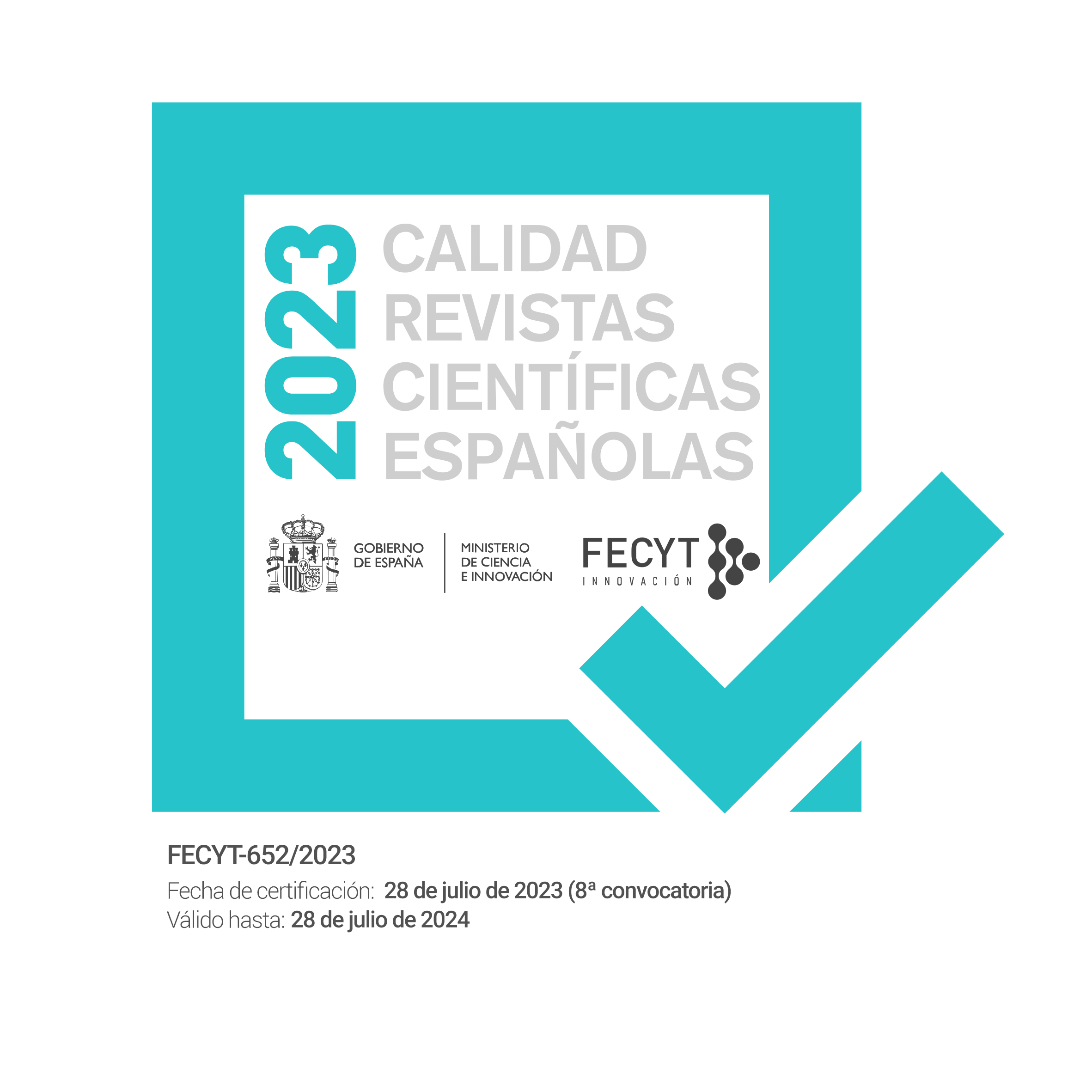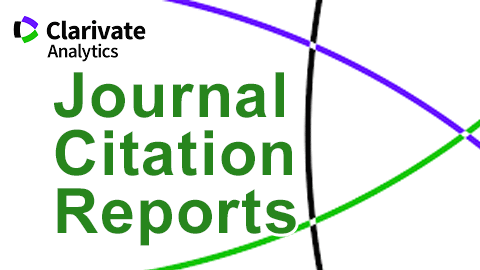Disambiguating a disambiguation tool: Babelfy from a linguistic point of view
Palabras clave:
disambiguation, ambiguity, context, NLP, polysemyResumen
Babelfy is an online tool, developed in the context of Natural Language Processing. When an item with more than one meaning is introduced in Babelfy, it chooses the appropriate meaning considering the context. The objective of this research study is to test the Word Sense Disambiguation skills of Babelfy in Spanish from a linguistic approach. To do so, a descriptive and comparative study between Babelfy and native Spanish speakers was carried out. Twenty-two pairs of sentences with an ambiguous word were designed, the first sentence of the pair had a neutral context and the second one a facilitating context. These sentence-pairs were introduced in Babelfy to check which meaning of the ambiguous word was selected and to explore whether there were differences depending on the type of context. These results were then compared to the answers of sixty-two Spanish native speakers. The data show that the behaviour of speakers when encountering an ambiguous word is not equivalent to the way Babelfy performs Word Sense Disambiguation, especially when the context is neutral, and the word has related meanings.
Citas
Author. (2019)
Author. (forthcoming).
Berners-Lee, T., Hendler, J., & Lassila, O. (2001). The Semantic Web. Scientific American. Online resource. Available at http://www.sciam.com/article.cfm?id=the-semantic-web&page=2
Escandell, M. V. (2008). Apuntes de semántica léxica. Madrid: UNED.
Gale, W., Church, K. W. & Yarowsky, D. (1992). Estimating upper and lower bounds on the performance of word-sense disambiguation programs. In Proceedings of ACL 30. (pp. 249-256) Morristown NJ: Association of Computational Linguistics.
Haro, J., Ferré, P., Boada, R. & Demestre, J. (2017) Semantic ambiguity norms for 530 Spanish words. Applied Psycholinguistics, 38(2), 457-475.
Hirschberg, J. & Manning, D. (2015) Advances in natural language processing. Science, 349(6245), 261-266.
Jacobs, A.M. & Ziegler, J.C. (2015), Neurocognitive Psychology of visual word recognition. In J.D. Wright (ed) International Encyclopedia of Social and Behavioral Sciences. (pp. 214-219) Amsterdam: Elsevier.
Jurafsky, D. & Martin, J.H. (2019). Speech and Language Processing. 3rd edition draft. Available at https://web.stanford.edu/~jurafsky/slp3/
Moro, A., Raganato, A., & Navigli, R. (2014) Entity Linking meets Word Sense Disambiguation: a unified approach. Transactions of the Association for Computational Linguistics, 2, 231-244.
Morton, H. C. (1994). The story of Webster's Third. Philip Gove's controversial dictionary and its critics. Cambridge: Cambridge University Press.
Navigli, R. (2009). Word Sense Diambiguation: a survey. ACM Computing Surveys, 41(2), 10:1-10:57.
Navigli, R. (2015). BabelNet, Babelfy and beyond: electronic lexicography from machines and the crowd. Keynote conference at ELex 2015, Sussex. Video available at https://www.youtube.com/watch?v=mliOk-ZCR1E&t=3067s
Navigli, R. & Ponzetto, S. (2012). BabelNet: The automatic construction, evaluation and application of wide-coverage multilingual semantic network. Artificial Intelligence, 193, 217-250.
Ouhnana, M. & Kingdom, F.A.A. (2016). Perceptual-binding in a rotating Necker cube: The effect of context motion and position. Vision Research, 126, 59-68.
Pinker, S. (2007). The Language Instinct. New York, NY: Harper Perennial Modern Classics.
Pustejovsky, J. (1995). The generative lexicon. Cambridge: The MIT Press.
Rodd, J., Gaskell, M. G., & Marslen-Wilson, W.D. (2002). Making sense of semantic ambiguity semantic competition in lexical access. Journal of Memory and Language, 46, 245-266.
Rosch, E. (1975). Cognitive representations of semantic categories. Journal of Experimental Psychology: General, 104, 192-233.
Schütze, H. (1997). Ambiguity resolution in language learning. Computational and cognitive models. Ph.D. thesis, Stanford University.
Solé, R., Corominas-Murtra, B., Valverde, S., & Steels, L. (2010). Language Networks: their structure, function and evolution. Complexity, 15(6), 20-26.
Srinivasan, M. & Rabagliati, H. (2015). How concepts and conventions structure the lexicon: cross-linguistic evidence from polysemy. Lingua, 157, 124-152.
Swinney, D.A. (1979). Lexical Access during during Sentence Comprehension. (Re)Consideration of Context Effects. Journal of Verbal Learning and Verbal Behavior, 18, 545-659.
Wasow, T., Perfors, A., & Beaver, D. (2005). The puzzle of ambiguity. In C.O. Orgun & P. Sell (eds) Morphology and the Web of Grammar: Essays in Memory of Steven G. Lapointe. (pp. 265-282) Chicago: CSLI Publications.
Youn, H., Sutton, L., Smith, E., Moore, C., Wilkins, J. F., Maddieson, I., Croft, W., & Bhattacharya, T. (2016). On the universal structure of human lexical semantics. Proceedings of the National Academy of Sciences, 113(7), 1766-1771.
Descargas
Publicado
Número
Sección
Licencia
Derechos de autor 2022 Natalia López Cortés

Esta obra está bajo una licencia internacional Creative Commons Atribución-NoComercial 4.0.
Reconocimiento – No comercial (CC BY-NC). Bajo esta licencia el usuario puede copiar, distribuir y exhibir públicamente la obra y puede crear obras derivadas siempre y cuando estas nuevas creaciones reconozcan la autoría de la obra original y no sean utilizadas de manera comercial.
Los autores retienen todos sus derechos de publicación y copyright sin restricciones.









